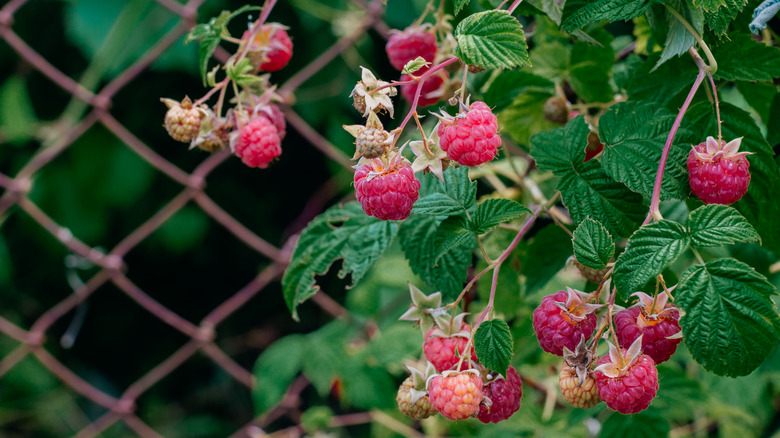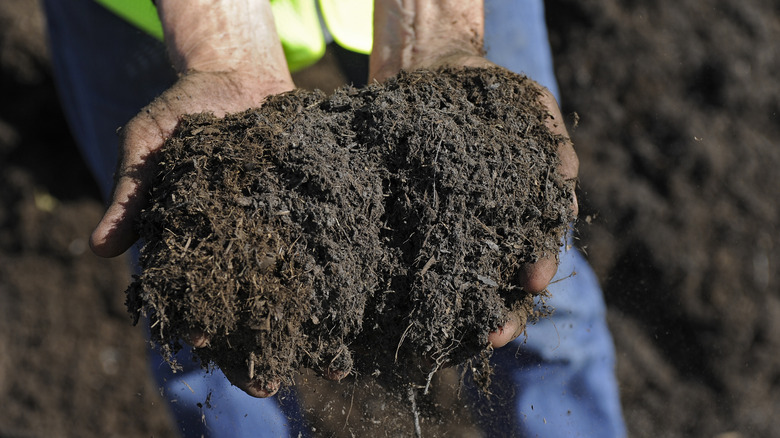The Best Time Of Year To Plant A Raspberry Bush In The Garden
Growing a raspberry bush in your garden is as charming as it is tasty. Not only will it make you feel like you're living out your cottagecore dreams by having berry bushes just steps away from your backdoor, but it also allows you to benefit from its bounty all season long. Rather than grumbling about the rising prices of raspberries, you can just pick a handful from your garden whenever you want. If that sounds ideal to you and you're itching to plant your own, just be aware that there is a time and place to do so. You can't just plant a raspberry bush during any time of the year. Instead, it's best to wait until early spring.
You want to wait until the last frost passes and the ground is thawed and workable again. If you're a person who likes specifics, wait until the ground has reached at least 50 degrees Fahrenheit. Being impatient and planting it earlier can damage the bush and stunt its growth. It can also potentially lead to root rot, which will eventually kill the plant before it's able to give you any fruit. But if you're reading this after spring, that doesn't mean you have to sit on your hands until the season comes back around again. Here is how to prep the ground so you can successfully plant your raspberry bush in the early spring.
How to prep for spring planting
You don't want to pick just any old spot in your backyard to plant your raspberry bush. Instead, pick an area that gets full sun and little shade. While the plant can technically grow in some shade, you won't get as bountiful of a harvest as you'd hope if you limit its sun intake. You also want to avoid any patches where tomatoes, strawberries, peppers, potatoes, or eggplants previously grew, since the dirt might be infected with fungal diseases that will quickly kill the plant.
Once you have your perfect area selected, it's time to prepare the soil for your future planting project. Specifically, you want to prep the soil in the fall by layering it with compost. The compost will break down and degrade over the winter, and the patch of dirt will be packed with beneficial nutrients and microbes by the time early spring comes around.
While you likely won't be able to harvest any fruit until the next year, you can expect it to begin to bloom annually in late May, and you can begin to harvest berries starting in July. While you shouldn't fertilize the ground the first year, you can add some natural fertilizer the following year in the early spring, which will give the plant a boost in energy and nutrients to produce plenty of blooms.

